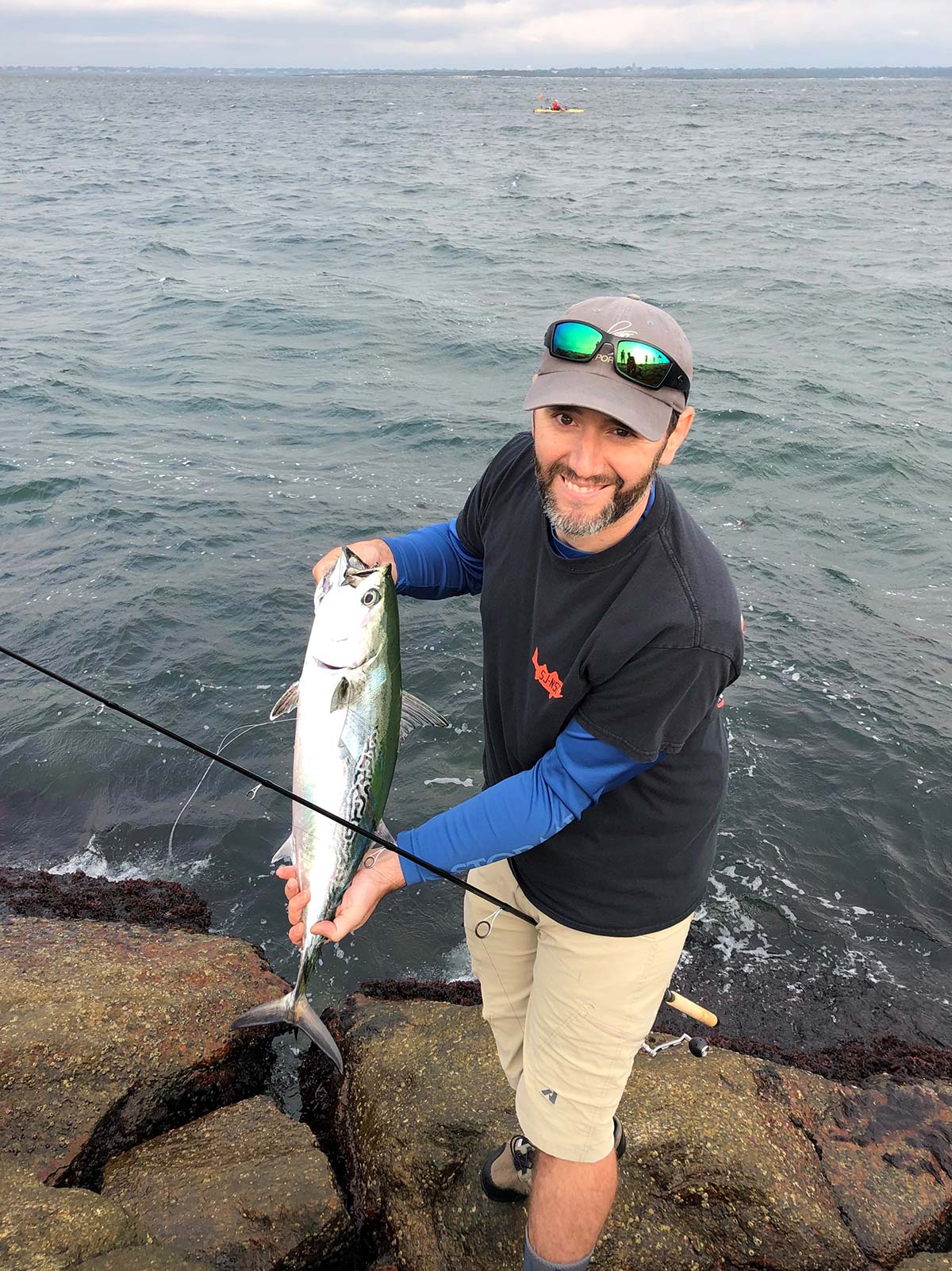
The second half of the albie run can be tough to figure out.
The first big push of albies generates a powerful type of hysteria that shakes the earth in a manner that might move the needle on the Richter Scale. For surfcasters, this means climbing aboard one of the local hotspot jetties or outcrops, casting and hoping, until the fish charge through or the sun goes down. One issue in recent years has been the dissemination of catch information via apps like TikTok and Instagram, it’s a daily occurrence that someone posts real-time catch info from a known hotspot sending vehicles sporting 7-foot rods from all over the region to the highways while Siri points out the oncoming turns.
But as waters cool and storms do their best to change the landscape; bites change, bodies of fish move and concentrations of baitfish leave no forwarding address as they explore new temporary homes. Sometimes we get lucky and the weather remains mostly stable and the fish stay around those well-known hot zones for weeks or even months. But that is the exception, not the rule, fall is notorious for curveballs, screwballs and knuckleballs, here are a few observations I’ve made that have put a few more albies on the rocks when many others seemed to be giving up.
When It Rains
During dry spells like we’ve experienced during the summer of 2022, rain can be a very good thing. Backwater estuaries are nursery zones for many of the baitfish that albies go crazy for, the big three being silversides, peanut bunker and mullet. These baitfish will make random, yet steady, exits when things are stable, but if a spate of heavy rain roars through, a rush of estuarine baitfish exiting the backwater often follows. I can’t say if this is a result of changes in water temperature, salinity or clarity (or combinations of these factors) but it’s a very real phenomenon that I have exploited for stripers and it also works with albies.
Many times, when the jetties, walls and outcrops go quiet after a big rain, I have made strategic moves to the outflows of ponds, smaller rivers and bays to find schools of albies slashing through schools of runoff-flushed bait without another angler in sight. I don’t know if the albies have some kind of evolutionary ESP or if they can somehow detect a fertile change in the water that leads them to the outflow or if it’s just ingrained instinct, but heavy rains have put the albies at the outflows several times in my years chasing them.
Storm Seas
This is a subject that sparks debate among albie aficionados, but the best albie guys I know all say that dirty water shuts the albie fishing down fast. I have seen evidence of an uptick in activity when the seas begin to kick up during the approach of an ocean storm, but once those seas go gray, green or brown, the albies disappear. This may count surfcasters out of the albie game altogether if the fish run offshore, but on multiple occasions when fishing for albies in Rhode Island waters, a tropical storm has sent the albies 10-plus miles up into Narragansett Bay and I would have to believe that this can happen in Long Island Sound or Raritan Bay as well.
The albies seem to make this run in search of a clean, sheltered water that is rich with bait. When you know a storm is going to hit, make a preemptive run into a big bay or protected sound and try to nail down a concentration of bait, then keep an eye on it to see if the albies find it.
Late Innings
As the season progresses to its declining days, I stop hunting for them, but I still keep the gear in my vehicle. We call these fish ‘tropical visitors’ but I have had them pop up on herring schools in water in the upper 50s. I have a friend who caught one in December up here in New England as well, so it’s wise to be prepared. The diehards I know say that they extend their season by looking for stragglers in the warmest waters available. That means sheltered bays, or the outflows of shallow, sun-warmed estuaries and it means taking advantage of human-induced warm-water flows, like those produced by a power plant. All of these areas offer the highest probability of hooking a late-run albie, but I will caution you again that these are welcome exceptions and happen very infrequently.
The last little shred of advice I will offer is one I have learned and relearned the hard way. Don’t try to think like an albie, trying to decide where they will and won’t be is a trap. Be open to change and willing to experiment. I never would have thought to look 10 miles up in the bay if I didn’t get a tip from a friend and I’ve found them up in the bay every year since. In 2020 a friend was casting to albies almost 30 miles inland from the ocean! Whatever Mother Nature throws at you this fall, if you want albies think clean water and bait, the rest should take care of itself.



